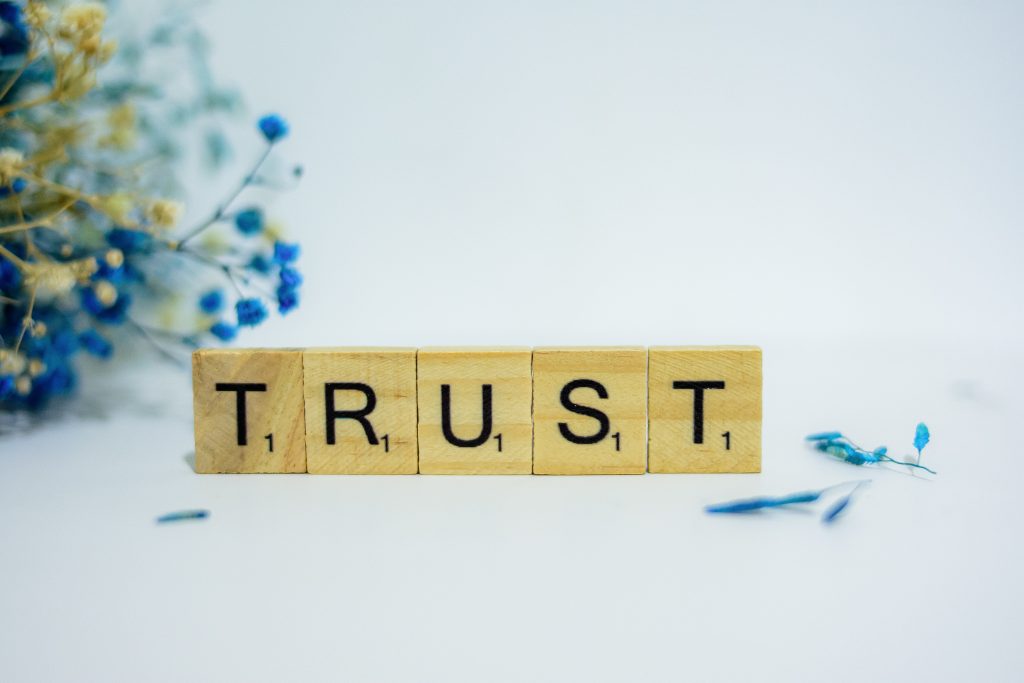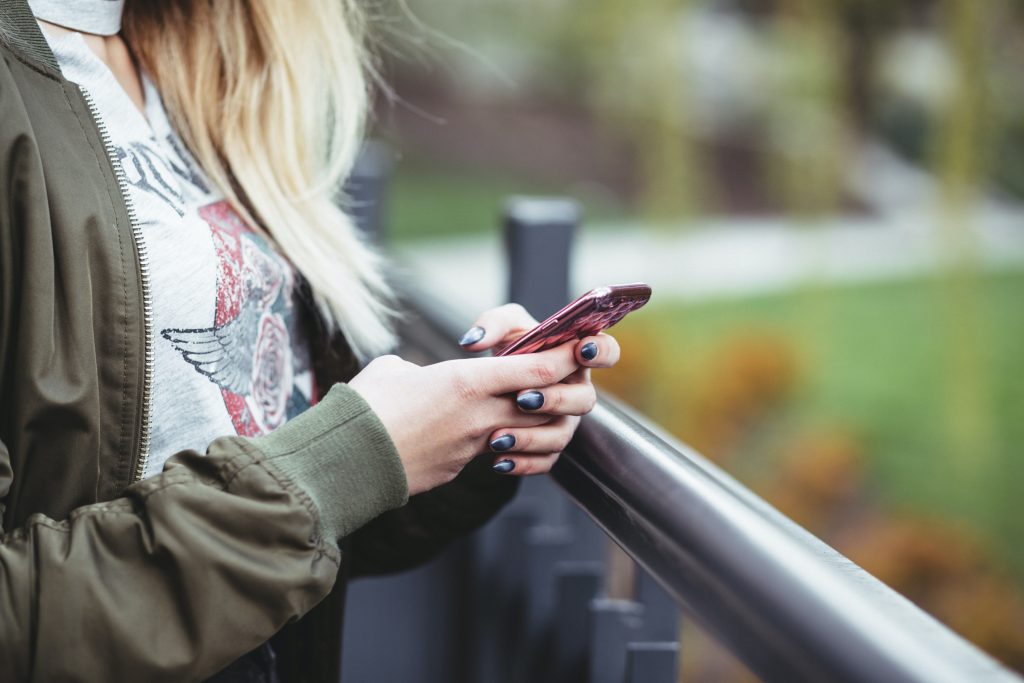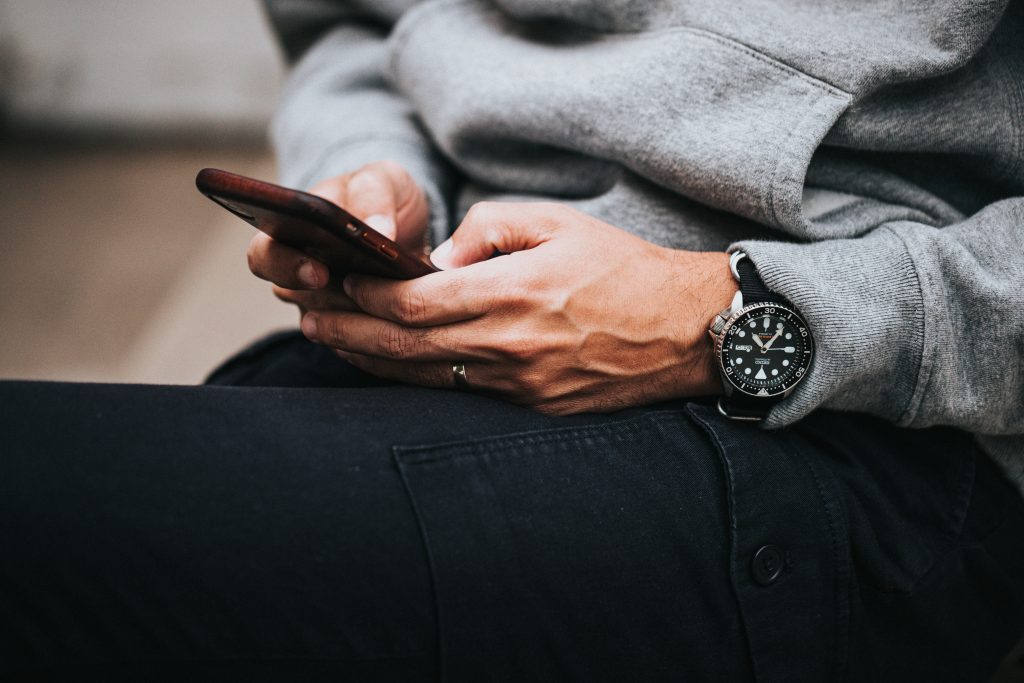Can we form a digital therapeutic alliance with a mental health app?

Apps developed to promote mental health can support individuals to manage their own wellbeing, alongside being a complementary tool for more traditional therapies. These apps often consist of features such as games, tasks, information, and symptom trackers. While there has been a surge in the development of such apps in recent years, the evidence base is still limited (Lecomte et al., 2020), indicating a need for further exploration.
In the mental health field, the therapeutic alliance is commonly understood to be a mutual working relationship, built on three dimensions (Bordin, 1979):
- Bond (emotional connection)
- Tasks (small steps to work on together)
- Goals (overall goals of therapy)
Research suggests that the therapeutic alliance is fundamental to positive in-person and remotely delivered therapeutic outcomes (e.g., Ardito et al., 2011; Baier et al., 2020; Kaiser et al., 2021; Martin et al., 2000). But what about a digital therapeutic alliance, where a person forms this therapeutic relationship with an app that has no human support? I have only ever thought about the therapeutic alliance as being a relationship between two or more humans (e.g., a client and a practitioner), developed through feeling listened to, understood, and ‘seen’, so this concept is interesting to me.
Overall, research exploring people’s capacity to develop bonds with apps has seen mixed results (Tong et al 2022). So, what does it mean to build a digital therapeutic alliance with an app? Tong and colleagues (2023) aimed to explore the dimensions of the digital therapeutic alliance with fully automated apps through a qualitative lens.

The therapeutic alliance is commonly understood to be a mutual working relationship, built on bond, tasks, and goals. So is a therapeutic alliance possible with a digital mental health app that has no human support?
Methods
Tong and colleagues (2023) conducted online semi-structured interviews with 19 adults who identified as currently or previously using a fully automated (i.e., without human support) mental health smartphone app (53% female, 58% 18-24 years old, 79% students).
Participants were asked about their use, experience of and relationship with mental health apps. To help understand this final element, participants were asked to think of a relationship they may have previously had with practitioner. Ten participants had never experienced in-person therapy, so were instead asked to imagine having a therapeutic alliance with a practitioner.
Interviews lasted between 26 to 61 minutes, and data was analysed using thematic analysis.
Results
Across the 19 participants, 20 different apps were identified, including Headspace, Calm, and Happify.
The authors generated five themes:
- Valuing flexibility
- The role of accountability
- The importance of emotional experiences for connections
- Enhanced openness
- Lack of agreement upon goals
In summary, they found that participants liked the flexibility offered by apps – they could pick them up and put them down as needed, and could get immediate access at any time, which helped to build a sense of safety. However, participants also felt that there was a lot of self-motivation and accountability required, meaning that if someone was experiencing high levels of difficulties, finding motivation to engage with the app could be a struggle. Despite this, participants still felt they could build an emotional connection with the app, and that this might be preferable to a human connection because they wouldn’t feel like a burden to others. This connection, however, could be jeopardised by a perceived lack of genuineness from the app, such as excessive promotion of paid features.
Participants expressed that they experienced these apps as “caring, understanding, listening, friendly, warm, comforting, thoughtful, compassionate, considerate and patient”. Participants were mixed in their sense of the ‘openness’ of the apps, in that some felt the apps were non-judgmental, while others experienced a level of distrust in the apps and were wary of sharing too much. These concerns were largely driven by experiences with other apps, and were related to worries about data privacy and security, including tracking information, linking accounts, and accessing information without permission. Some participants also said that they needed to have two-way communication, such as immediate responses or continuous conversations; the lack of this type of interactivity meant that they were not able to form emotional connections with the app.
Reasons for app use varied and included (i) avoiding feelings of loneliness and boredom, (ii) managing stress, anxiety, sleep problems and chronic pain, and (iii) as an alternative to getting help from a healthcare professional during the COVID-19 pandemic. Some participants only used the apps on the recommendation of their friends or workplace. Not all participants identified clear goals while using the apps, which the authors determined may not be an important element of the digital therapeutic alliance.
The authors suggested relationships between the themes, with trust in technology underpinning both the ‘emotional connections’ and ‘openness’ themes. I would have found it interesting to consider epistemic trust here, which is built in human relationships through mentalization (the process of understanding the self and others), which makes people feel safe to think about themselves and their difficulties, and to learn new information about how they understand and navigate the world (Fonagy & Allison, 2014).

Key elements to developing a digital therapeutic alliance with mental health apps include flexibility, self-motivation, emotional connections, openness, and trust.
Conclusions
Tong et al. (2023) concluded that this area is under-researched, and that their study offers the first qualitative exploration of the dimensions of the digital therapeutic alliance with fully automated mental health apps. The authors emphasised that the study aimed to conceptualise the digital therapeutic alliance, and that it can,
be built through users’ accountability, openness to apps, emotional experiences and connections with apps, and flexible interactions with apps.

In this under-researched area, Tong et al. (2023) offer the first qualitative exploration of the dimensions of the digital therapeutic alliance with fully automated mental health apps.
Strengths and limitations
A considerable strength of the study is that it adds to the limited evidence base in this area and provides thought-provoking insights into how people engage with and experience mental health apps. Future research could focus on larger and more diverse samples; for example, it would have been interesting if the authors had asked for the ethnicity of the sample and reflected more on the demographics they did collect. It is important to explore how ethnicity might have been associated with the digital therapeutic alliance, not least to consider the unidimensional attributes of apps and how those align with the dimension of cultural empathy within the therapeutic alliance (Asnaani et al., 2012; Ullrich, 2019; Vasquez, 2007).
Less than half of the participants had experience of a human therapeutic alliance with a practitioner, to use as a basis of comparison. It would have been interesting to explore those interview responses separately from those who did have prior experiences, particularly given that the study was conducted during the COVID-19 pandemic when many people were isolated and did not have access to in-person therapy. There was a missed opportunity to give these comparisons more consideration.
The assumed direct transfer of a therapeutic alliance to an app, as well as using topic guide questions from a previous qualitative study on person-to-person therapeutic alliance, is an area for further consideration. What impact this might have had on the interviews and the analysis of them is currently unknown. The overarching question for me is whether the connection between a client and their practitioner and a person and an app is the same thing. I was surprised to read the findings relating to participants describing emotional connections with the apps they used, and as such, it would be interesting to explore the differences between alliances (person-person and person-app) and associated mental health outcomes.
The authors state that the participants experienced mild mental health difficulties. Much of the research focused on the person-person therapeutic alliance (which underpins the concepts used in this research) considers clients accessing therapy with varying levels of need. As such, it is important to consider this when applying the concepts and comparing the research to digital therapeutic alliance with apps.

Future research should focus on larger and more diverse samples, alongside considering how we approach measuring the digital therapeutic alliance. Is a person-app relationship comparable to a person-person relationship?
Implications for practice
It is important to explore what it is that makes people like using mental health apps – what draws them in, keeps them engaged, and helps to support their mental health. Given that there are over 10,000 mental health apps available (Torous & Roberts, 2017), the exploration of what is underneath (i.e., the common components of what is perceived as effective and acceptable) is vital to understanding how best to provide digital mental health support. Tong and colleagues (2023) speak to these questions well with their research, with their themes covering concepts such as accountability and openness. It would be interesting to explore some of these concepts quantitatively on a larger scale, to understand how widespread these views are.
In animal therapy research, researchers refer to bonds between the animals and people as having parallels with therapeutic alliance (Yorke et al., 2015), rather than referring to this as a therapeutic alliance itself. In a similar way, I wonder if it’s okay to hold the person-person therapeutic alliance and the person-app therapeutic alliance separately, which is something the authors highlighted in earlier research (Tong et al., 2020). In the current study, Tong and colleagues (2023) found that goals didn’t seem to be a part of the digital therapeutic alliance, whereas this is central to the person-person therapeutic alliance. I wonder whether different themes would have been derived from the interviews if a different stance had been taken, which moved away from pre-existing knowledge regarding the person-person therapeutic alliance, and instead focused on the digital therapeutic alliance as its own unique concept. This might be something to explore in the future.
Finally, there are important practical and ethical implications for both policy-makers and practitioners to consider when exploring how individuals interact with and experience mental health apps. This research provokes questions such as how these apps might supplement or change the in-person therapeutic process, and what guidelines may be needed to support the prescribing and use of these apps.

More research is needed in this area, particularly in relation to how mental health apps are used and what common components make them effective and acceptable to users.
Statement of interests
None.
Links
Primary paper
Tong, F., Lederman, R., D’Alfonso, S., Berry, K., & Bucci, S. (2023). Conceptualizing the digital therapeutic alliance in the context of fully automated mental health apps: A thematic analysis. Clinical Psychology & Psychotherapy.
Other references
Ardito, R. B., & Rabellino, D. (2011). Therapeutic alliance and outcome of psychotherapy: historical excursus, measurements, and prospects for research. Frontiers in Psychology, 2, 270.
Asnaani, A., & Hofmann, S. G. (2012). Collaboration in multicultural therapy: Establishing a strong therapeutic alliance across cultural lines. Journal of Clinical Psychology, 68(2), 187-197.
Baier, A. L., Kline, A. C., & Feeny, N. C. (2020). Therapeutic alliance as a mediator of change: A systematic review and evaluation of research. Clinical Psychology Review, 82, 101921.
Fonagy, P., & Allison, E. (2014). The role of mentalizing and epistemic trust in the therapeutic relationship. Psychotherapy, 51(3), 372.
Kaiser, J., Hanschmidt, F., & Kersting, A. (2021). The association between therapeutic alliance and outcome in internet-based psychological interventions: a meta-analysis. Computers in Human Behavior, 114, 106512.
Lecomte, T., Potvin, S., Corbière, M., Guay, S., Samson, C., Cloutier, B., … & Khazaal, Y. (2020). Mobile apps for mental health issues: meta-review of meta-analyses. JMIR mHealth and uHealth, 8(5), e17458.
Martin, D. J., Garske, J. P., & Davis, M. K. (2000). Relation of the therapeutic alliance with outcome and other variables: a meta-analytic review. Journal of consulting and clinical psychology, 68(3), 438.
Tong, F., Lederman, R., D’Alfonso, S., Berry, K., & Bucci, S. (2022). Digital therapeutic alliance with fully automated mental health smartphone apps: A narrative review. Frontiers in Psychiatry, 13, 819623.
Torous, J., & Roberts, L. W. (2017). Needed innovation in digital health and smartphone applications for mental health: transparency and trust. JAMA Psychiatry, 74(5), 437-438.
Ullrich, H. E. (2019). Culture, empathy, and the therapeutic alliance. Psychodynamic Psychiatry, 47(4), 425-440.
Vasquez, M. J. (2007). Cultural difference and the therapeutic alliance: an evidence-based analysis. American Psychologist, 62(8), 878.
Yorke, J., Adams, C., & Coady, N. (2008). Therapeutic value of equine-human bonding in recovery from trauma. Anthrozoös, 21(1), 17-30.
Photo credits
Source link
#form #digital #therapeutic #alliance #mental #health #app

